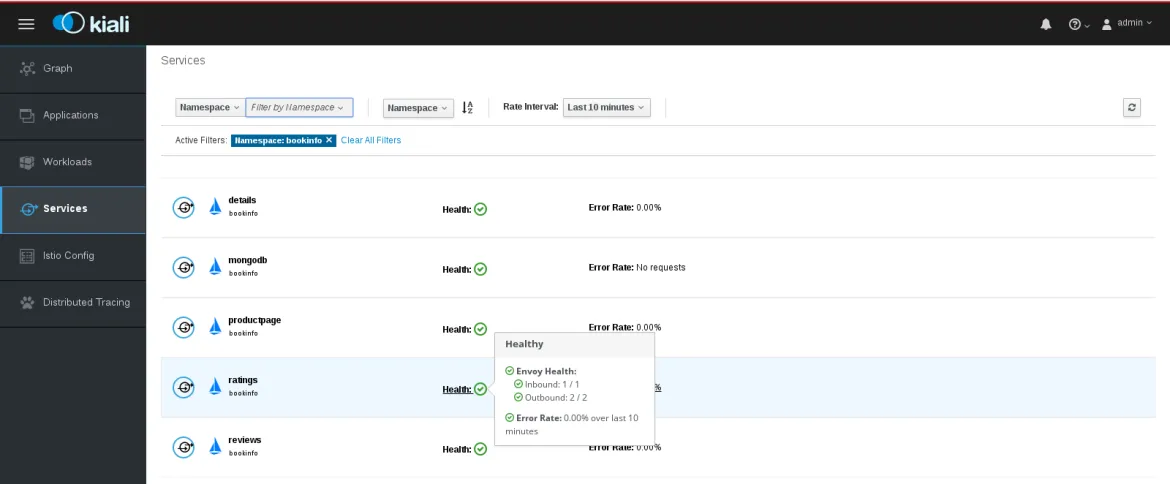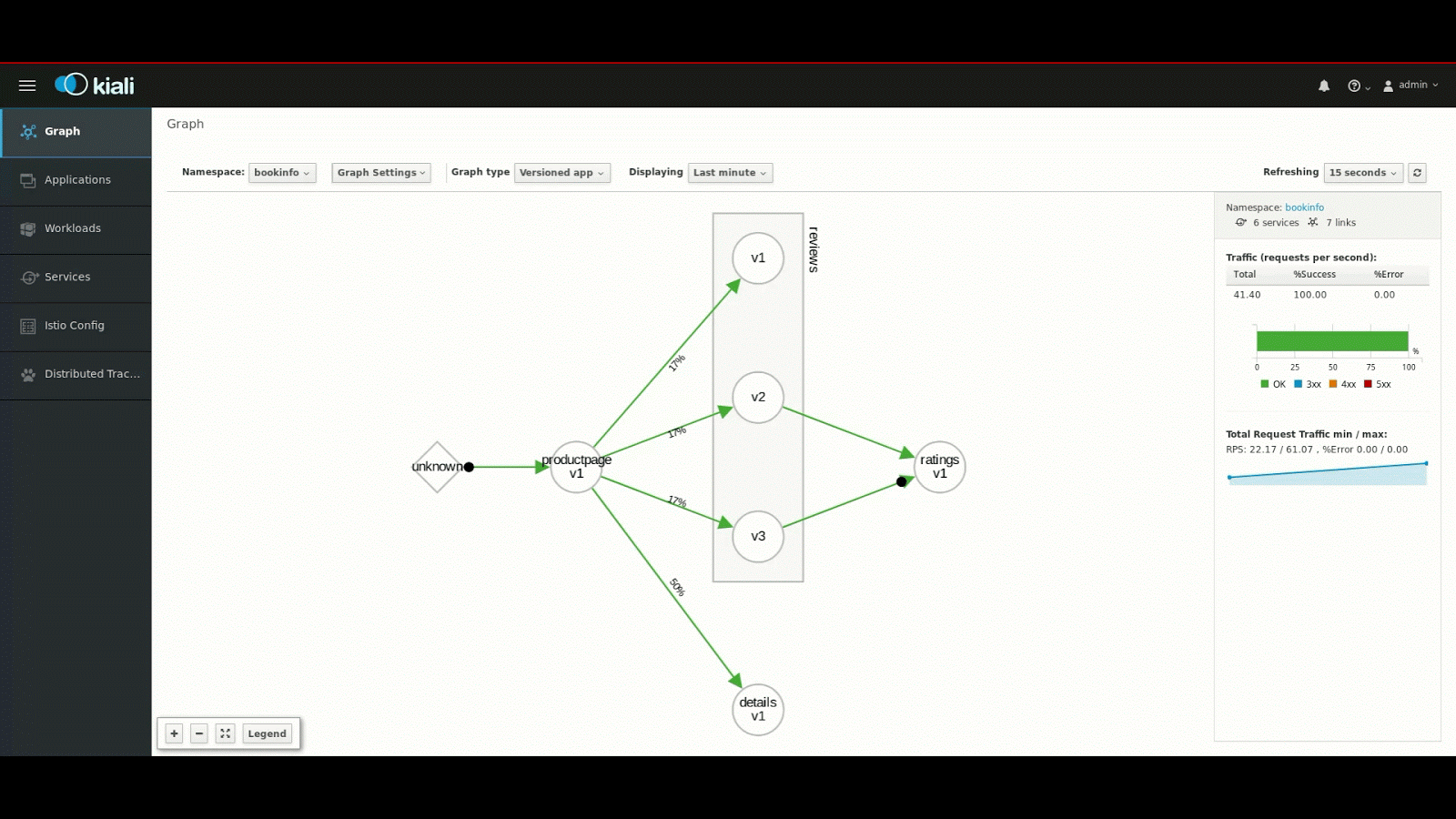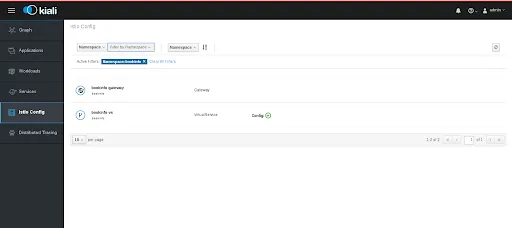It’s been a few weeks since the release of the first tech preview of Istio on OpenShift. Since then a lot has happened, and we are happy to announce the availability of our second tech preview release.
In this release we are adding a whole new user interface from the upstream Kiali project. The Kiali user interface can help Istio users understand what’s happening in their service mesh, canl show how the various components are connected, and can help to detect issues (HTTP 500, pod not started, misconfigurations) to better fix those.
Here are some of the core features of Kiali:
- Collect health information: Kiali will display the health of services and inter-service requests. For example, Kiali will aggregate health data from Kubernetes (Pod health) as well as from Istio Mixer (error rates below a threshold).

- Service mesh visualization: A graph displays how the various components of the mesh are related/connected. The service mesh graph offers many configuration options to customize the data displayed. One can choose how service versions are displayed, choose to display the number of requests over time, or the request’s time (how long the request took by average or percentiles) between two components.
An animated graph helps provide a more natural way to visualize both the inter-component request latency (speed of the dots) and the amount of traffic between two components (number of dots). An example service graph is shown below.

- Configuration validation (Configuration editing is planned for a future release): It can be error prone to write Istio configuration, Kiali can help finding out some common errors, in future releases, Kiali plans to complement Istio Galley.

A Kiali tutorial is available in the OpenShift Service Mesh installation guide. The guide will not only provide you with information on Kiali, but will also help you to install the whole Service Mesh suite, including Jaeger for distributed tracing and Grafana (for deeper metrics analysis), on an existing OpenShift 3.10 (or later) cluster.
Kiali is a project originally started by Red Hat engineers who are also contributing to Istio. Starting from the 1.1 release of Istio, Kiali is expected to become the default visualization console. Kiali is in a very active/rapid state of development, and the upstream community will be happy to get feedback and contributions.
Red Hat’s aim is to regularly release Tech Preview drops over the coming months. Stay tuned, and be sure to provide us with your feedback on OpenShift Service Mesh - we want to take your comments into account!
À propos de l'auteur
Parcourir par canal
Automatisation
Les dernières nouveautés en matière d'automatisation informatique pour les technologies, les équipes et les environnements
Intelligence artificielle
Actualité sur les plateformes qui permettent aux clients d'exécuter des charges de travail d'IA sur tout type d'environnement
Cloud hybride ouvert
Découvrez comment créer un avenir flexible grâce au cloud hybride
Sécurité
Les dernières actualités sur la façon dont nous réduisons les risques dans tous les environnements et technologies
Edge computing
Actualité sur les plateformes qui simplifient les opérations en périphérie
Infrastructure
Les dernières nouveautés sur la plateforme Linux d'entreprise leader au monde
Applications
À l’intérieur de nos solutions aux défis d’application les plus difficiles
Programmes originaux
Histoires passionnantes de créateurs et de leaders de technologies d'entreprise
Produits
- Red Hat Enterprise Linux
- Red Hat OpenShift
- Red Hat Ansible Automation Platform
- Services cloud
- Voir tous les produits
Outils
- Formation et certification
- Mon compte
- Assistance client
- Ressources développeurs
- Rechercher un partenaire
- Red Hat Ecosystem Catalog
- Calculateur de valeur Red Hat
- Documentation
Essayer, acheter et vendre
Communication
- Contacter le service commercial
- Contactez notre service clientèle
- Contacter le service de formation
- Réseaux sociaux
À propos de Red Hat
Premier éditeur mondial de solutions Open Source pour les entreprises, nous fournissons des technologies Linux, cloud, de conteneurs et Kubernetes. Nous proposons des solutions stables qui aident les entreprises à jongler avec les divers environnements et plateformes, du cœur du datacenter à la périphérie du réseau.
Sélectionner une langue
Red Hat legal and privacy links
- À propos de Red Hat
- Carrières
- Événements
- Bureaux
- Contacter Red Hat
- Lire le blog Red Hat
- Diversité, équité et inclusion
- Cool Stuff Store
- Red Hat Summit

